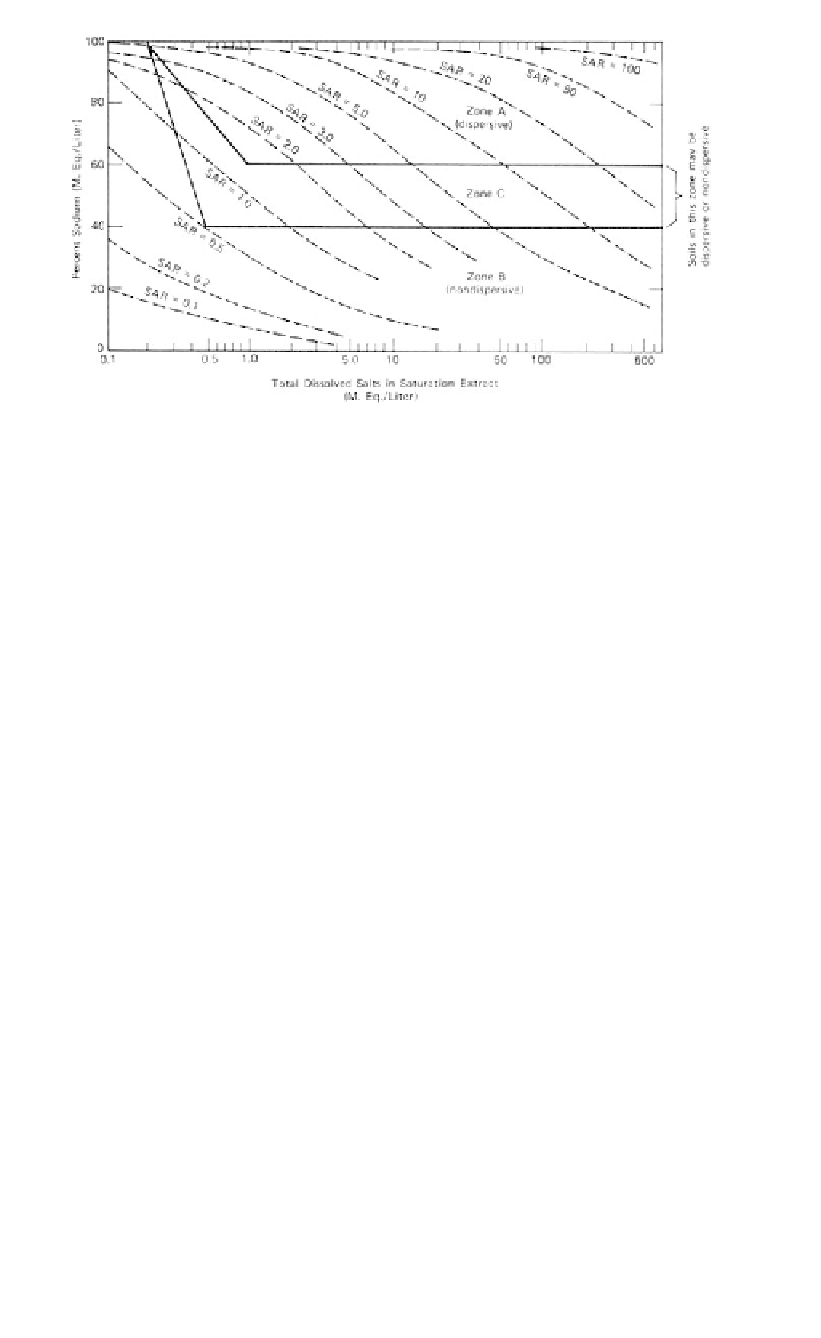Environmental Engineering Reference
In-Depth Information
Figure 7.15.
Relationship between dispersivity and dissolved pore water salts content (Sherard
et al., 1976a, reproduced with permission of ASCE).
claimed a general relationship, valid for most soils, has now been established with con-
siderable confidence as shown in Figure 7.15. They indicate that in this figure:
Zone A
- much experience shows that damaged and failed dams all over the world have
been constructed of these dispersive soils. Almost all soils are dispersive in the pinhole test.
Zone B
- the great majority of these soils are nondispersive. These are the soils gener-
ally considered “ordinary erosion resistant clays”, but include silts of low plasticity (ML),
also nondispersive. A small percentage of exceptional soils in Zone B erode in the pinhole
test in exactly the same fashion as soils of Zone A, and some of these can be identified
only by the pinhole test.
Zone C
- soils in this group may range from dispersive to nondispersive. This group
contains a few soils which give intermediate reaction in pinhole tests, with apparently col-
loidal erosion but at a very slow rate compared with soils of Zone A.
These relationships are only valid for relatively pure eroding waters (such as TDS less
than 0.5 meq/1 or about 300 ppm). This is because they are based on results of pinhole
tests using distilled water and case histories of erosion in nature caused mainly by rain-
water and relatively pure reservoir waters.
While Sherard et al. (1976a) found good agreement with this test and field behaviour,
Bell and Maud (1994) indicate the method was unreliable in South African conditions.
They quote Craft and Acciardi (1984) as concluding that the extraction of the soil water
is difficult because of the low volumes used. They indicate it may be used where prior test-
ing correlates well with the pinhole test.
Sherard et al. (1976a) did have small number of soils which tested as erodible in the pin-
hole test falling in Zone B. These soils were not from failed dams or areas showing erosion.
Another terms which are useful for assessing the likely dispersivity of a soil are:
geable sodium
cation exchange capacity
exchan
Exchangeable sodium percentage (ESP)
100
(7.9)
Na
o
r
100,
(7.9a)
Na
K
Ca
Mg
where the units are milliequivalents/100 grams of dry soil.



